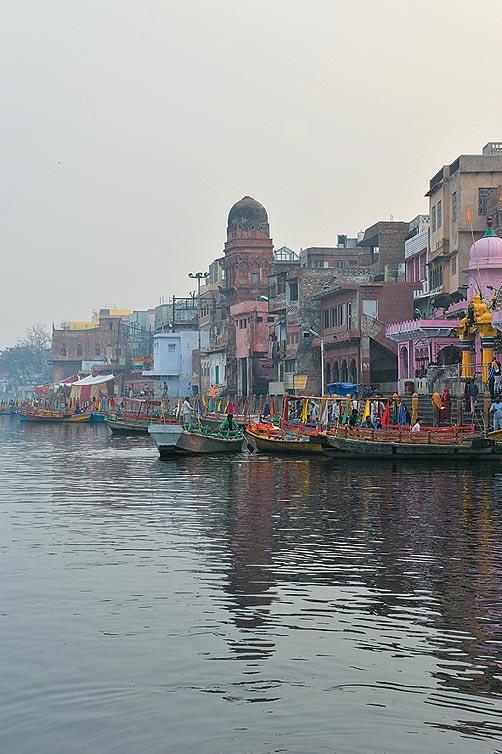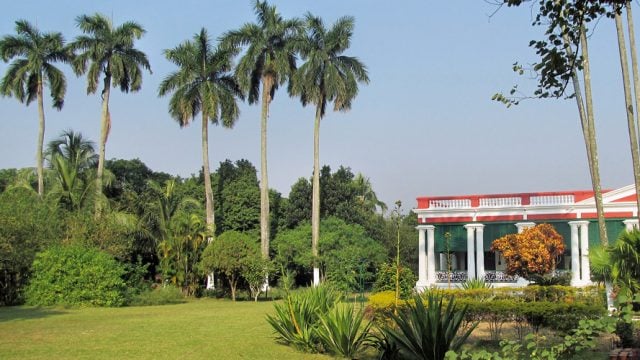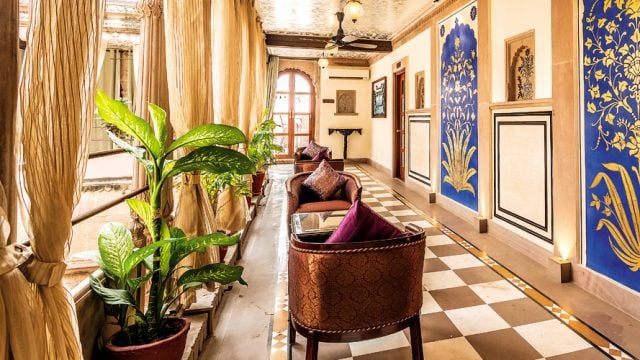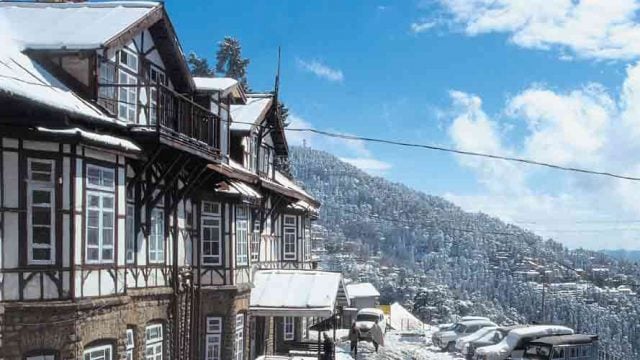The road to piety and Krishna consciousness isn’t easily traversed. Exiting the concretised Yamuna Expressway
Other signs from the universe too were not quite propitious that morning. On our way to our first temple stop, navigating a narrow road overladen with trucks, our car’s left front wheel veered off the road-lip with a crunching thud. And barely minutes later, our local Spanish-speaking guide Gaurav was charged at by a beefy buffalo that claimed right of way, causing him to scamper away unedifyingly with his gaurav severely dented. Our faith, it appeared, was on stern test; we resigned ourselves to the thought that it was, as the Brajwasi folks say with fatalistic finality, all Krishna leela.
We were in Vrindavan-Mathura for a quick roundabout of Krishna’s legendary playground. It was here, in Braj bhoomi in the epochal Dvapara Yuga some 5,000 years ago, that Krishna was, in the popular belief, born and raised, and where he carried out his courtship of Radha, flirted with gopis, lifted the Govardhan hill to protect the people from torrential rains and floods, vanquished demons — and in many other ways stood up for righteousness in Mahabharata battles. But beyond that certitude of belief, many aspects of legendary history, including the precise location in Mathura where Krishna was born, rest on contested terrain.
The Krishna Janmasthan temple is a triumphalist structure, which has for some years now (following the Ayodhya dispute) been ring-fenced by security so overwhelming that it distracts from the piety of the pilgrims. In the few minutes that they get to spend at the sanctum, the faithful burst into energetic bouts of bhajans before they are hustled away. But barely 250 metres away is a much smaller shrine that advertises itself as marking the “real birthplace” of Krishna. Here, the resident priest, Krishna Chandra Goswami, holds expansive court, even furnishing archaeological documents and cartographic ‘evidence’ to establish the site’s claim to being the fountainhead of the Krishna katha.
Krishna’s life-story would play itself over and over again for much of the two days we were in Vrindavan-Mathura visiting temples and sites associated with the legend. Other histories too are native to the Braj region: a visit to the Mathura Museum, for instance, yields a treasure-trove of archaeological finds from the Kushana, Sunga and Gupta periods, including stunning Buddhist sculptures and the famed headless statue of emperor Kanishka. But these strands are today subsidiary to the Krishna leela narratives. Gaurav insisted on showcasing temple after temple, dedicated to Krishna (and the many other names by which he is known: Madan Mohan, Banke Bihari, Govind Dev, Govardhan, and so on). Several of them, of course, made for interesting expeditions, and facilitated joyous interactions with Krishna devotees from all over the world, including a family from Kanpur that travels everywhere with an adorable ‘laddu Gopal’ image of Baby Krishna, and an ISKCON group from Kazakhstan. But it needed a Venky-upadesa (on cultural diversity) to get Gaurav enthused about these alternative histories or even to visit a widows’ ashram. By the time we got him to take us to Surdas’ samadhi — which was a revelation even to him — he had unwound well enough to recite some poetry in his native Brajbhasha.
More artful performances awaited us that night. Before retiring to our hotel, we attended a Raas-leela show, which was billed as something of a high point on Vrindavan’s cultural calendar. The artists were depicting Krishna’s courtship of Radha, which was characterised alternately by playfulness and longing, with each emotion nuanced to a nicety. There was a certain rustic charm to the performance, which more than made up for the lack of theatrical sophistication; seated in an old-world auditorium, with long-stem ceiling fans hulking over us, about 500 or so of us watched enraptured, and joined in the chorus renditions in Brajbhasha.
Nidhivan, where we stayed the night, lays claim to being the only four-star property in the Vrindavan-Mathura belt. It’s the first in a proposed chain of hotels, and it offers a level of comfort that discerning travellers are accustomed to. The 68 rooms have a certain understated elegance, and as I sank my tired limbs into the soft bed — after gorging on the lavish spread that resident chef Paltu Bhatacharya had put together (ending with a lauki kheer) — I thanked Krishna for the mercy of kind hospitality. Perhaps, I felt, I had passed the test of faith…
Faith, it has been well said, can move mountains, in the same way that Krishna, in the popular narrative, lifted up the Govardhan. It is impossible to watch the countless pilgrims doing their full-stretch parikrama of Vrindavan-Mathura and the 84 kos that covers the larger Braj region and not be humbled by the inspirational power of faith. Vrindavan-Mathura is an old town, and its civic amenities are pitifully inadequate even for a small town. And, yet, here they flock, Krishna devotees by their thousands, rolling on the floor (or dancing on the streets), enraptured in Krishna’s life. The rational mind cannot conceivably account for such prolonged inurement to unhygiene. It must, as Brajwasis say, all have been Krishna leela.
The information
Vrindavan is 150km from Delhi on the Yamuna Expressway. Nidhivan (nidhivan.com), where we were hosted, offers four-star accommodation. The property has 68 deluxe rooms across four floors. Regular tariff: Rs 5,900 plus 12.42 per cent tax, but the hotel currently offers a deal: Rs 4,000 for double occupancy (including tax) and Rs 3,800 for single occupancy (including tax).
Mathura
Vrindavan
Leave a Reply
You must be logged in to post a comment.





